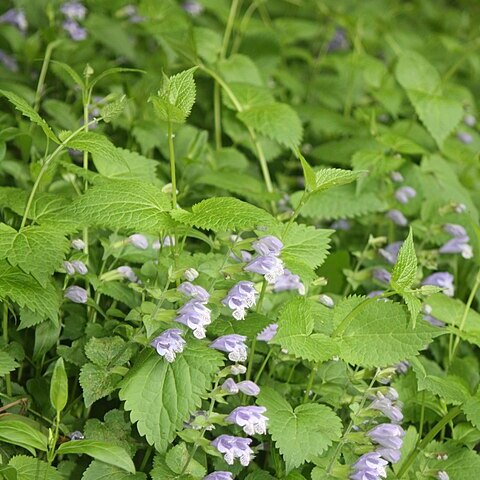Herbs perennial. Stems slender, erect, tufted, 20-40 cm, unbranched, villous or retrorse villous when young, glabrous or subglabrous except for nodes. Leaves largest at mid stem; petiole 0.5-4 cm, shorter toward apex, sometimes obsolete; leaf blade cordate to ovate-cordate, 3.2-8.2 × 2.6-6.8 cm, pilose, base cordate, margin serrate to crenate-serrate, apex acuminate to acute. Verticillasters 2-to few flowered, in terminal racemes; adaxial floral leaves ovate to lanceolate, less than 3.5 cm, villous; bracteoles subulate, ca. 1 mm. Pedicel 3-9 mm. Calyx campanulate, 1.3-1.8 cm, floccose-pilose or sparsely puberulent; teeth ovate to ovate-triangular, ca. 3 mm, ciliate, apex acute or cuspidate, rarely acuminate, adaxial teeth longer. Corolla bluish purple to purple-red, 2.2-4 cm, villous, gradually dilated at apex; upper lip straight, elliptic, 2-lobed, lobes circular to suboblong; lower lip dilated, middle lobe flabellate, apex emarginate; lateral lobes small, subovate to oblong, 2/5-1/2 as long as middle lobe. Nutlets ovoid-oblong, adaxially slightly triquetrous at base, pubescent, base small umbonate. Fl. May-Jun, fr. Jun.
More
A hairy herb. It grows 15-30 cm tall. The leaves are 3-5 cm long. They are triangle or heart shaped and have coarse teeth. The flower spikes are one sided. They are bluish-purple with purple spots on the lower lips. There are 3-12 flowers on a stalk.

